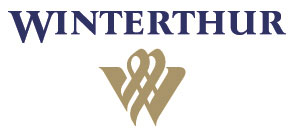The full content of this document is only available to subscribing institutions. More information can be found via www.amdigital.co.uk
If you believe you should have access to this document, click here to Login.
| Field name | Value |
|---|---|
| Title | Chinese Paintings of Punishments of Criminals, c. 1800-1900 |
| Reference | Col. 111, box 1, folder 6 |
| Library | Winterthur Library |
| Collection | The Joseph Downs Collection of Manuscripts and Printed Ephemera |
| Collection Series | Collection of Chinese Export Watercolours, [c. 1790 - c. 1860] |
| Date | c.1800-1900 |
| Description |
The 12 paintings depict: 1. Magistrate in court 2. Arrest of criminals [sic, only one criminal is being arrested] 3. Punishment of criminal by parading him in the street 4. Slapping the mouth for telling lies 5. Punishment by stretching the criminal on a wooden bench [with another criminal confined in a barrel or bag of some sort] 6. Punishment by cangue, or wooden pillory 7. Torture by pressing the ancles [sic] of criminal with wooden poles 8. Bambooing his breeches [i.e. hitting the criminal on the buttocks with a bamboo pole] 9. Tying him to a stone 10. Banishment 11. Ling Ch’ee (i.e. cutting off the flesh of the criminal piece by piece) 12. Beheading – the capital punishment in China. |
| Document Type | Painting |
| Theme(s) | Trade and Commerce; Arts and Artefacts; Cultural Exchange; Crime |
| Keywords | commodity, art, goods, trade, chinoiserie, culture, watercolour, album, crime, criminal, punishment, torture, court, law, legal |
| Countries | China; USA |
| Additional Information |
Chinese export watercolors were painted in the port cities of China for sale to western customers in the late 18th and 19th centuries. Until the middle of the 19th century the watercolors were mostly souvenirs brought back by merchants. Afterward, they became commodities in their own right. The watercolors were painted in workshops using mass production techniques. Works were done in watercolor or gouache, initially on European papers, particularly paper produced by the English firm of J Whatman, but later on pith ‘paper’, produced from the pith of the Chinese plant tongcao. Many were issued in sets covering trades, domestic interiors and gardens, boats, birds, mandarins, etc. Particularly popular were sets illustrating tea culture, the silk industry, and the making of porcelain as they explained the products imported to the west. Colors used were those common in Chinese painting, but there was a clear tendency for primary hues to predominate, especially in those done on pith paper. Please note that some of the metadata for this document has been drawn from the Winterthur Library catalogue. |
| Copyright | Winterthur Library |


